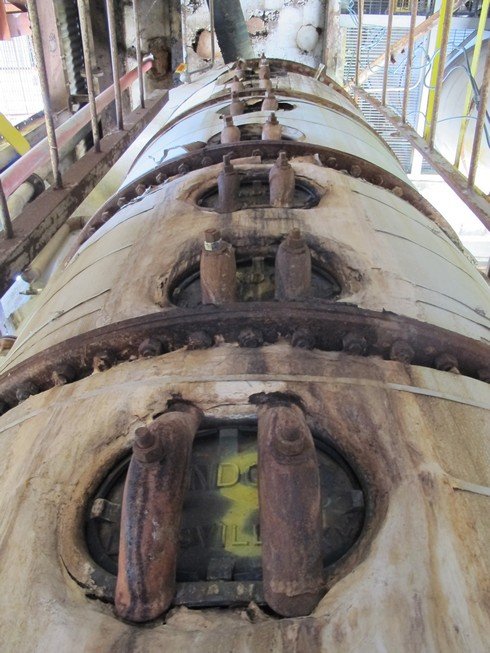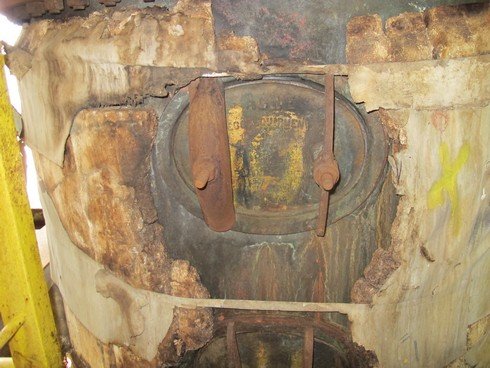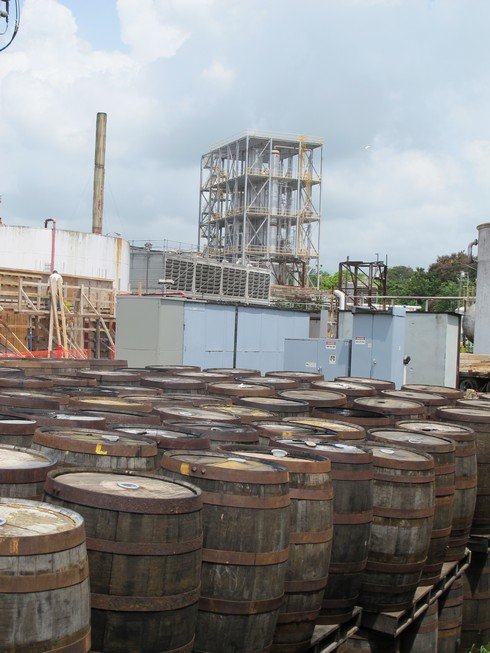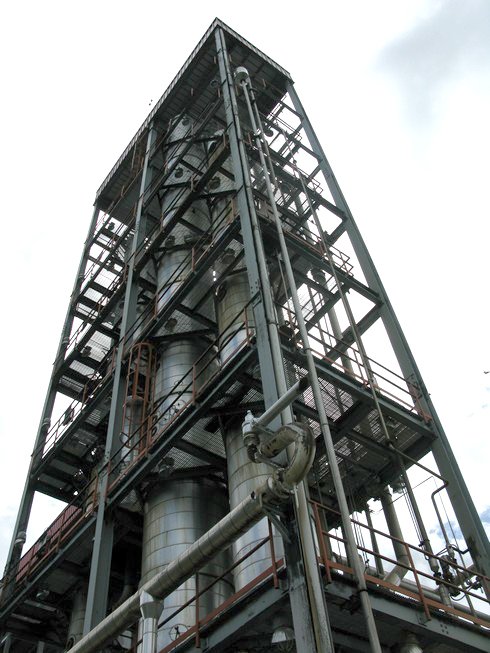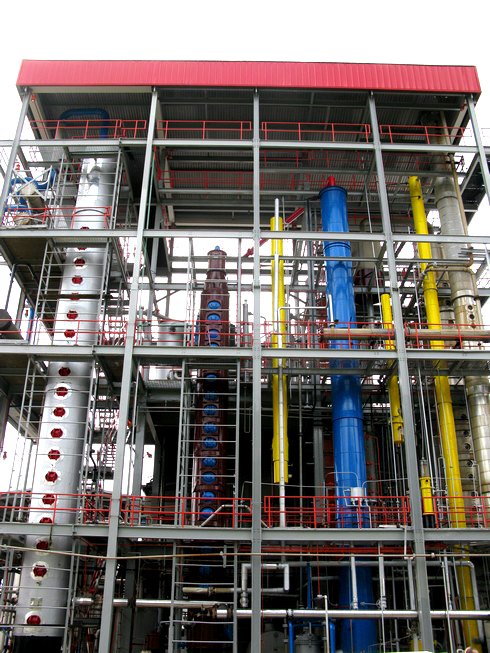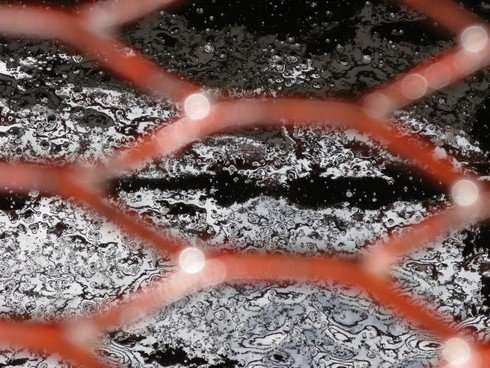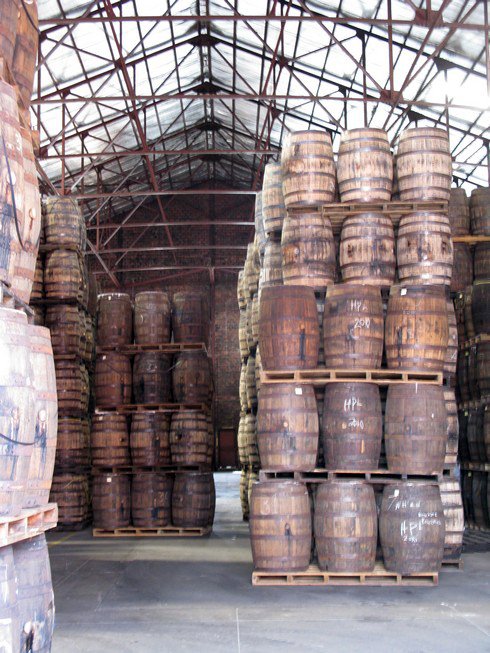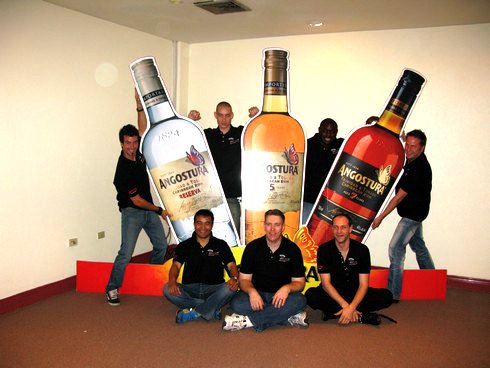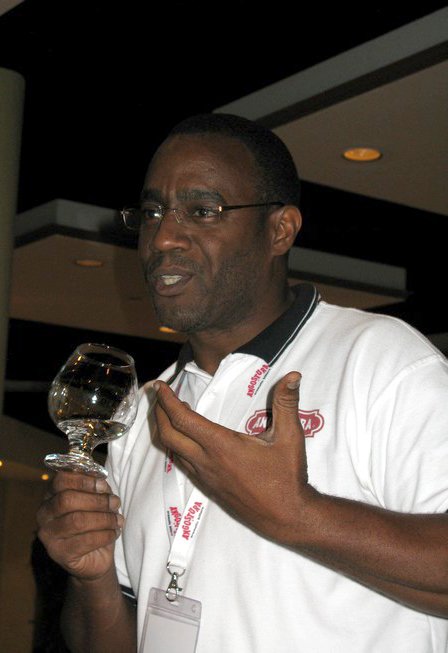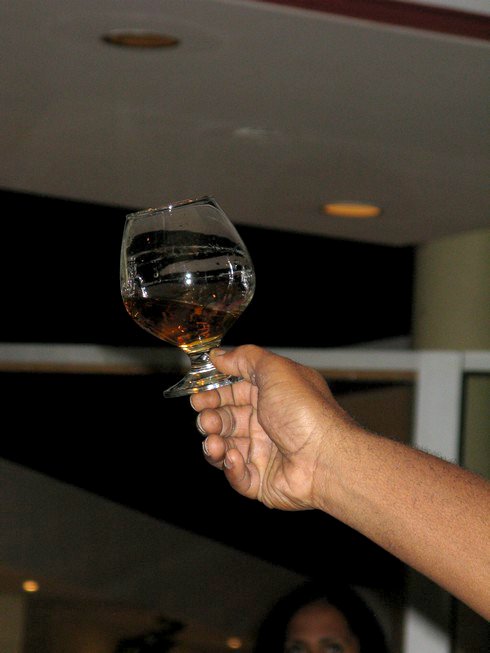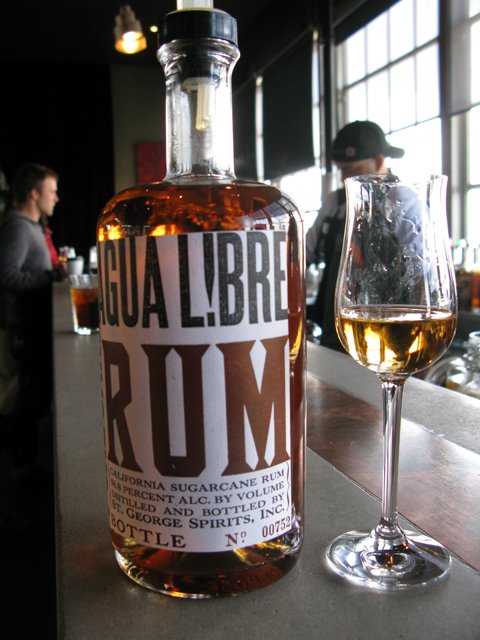This summer I visited the Destileria Serralles Puerto Rico, the home of DonQ Rum.
DonQ is distilled in the southern part of Puerto Rico, in Ponce. The distillery has been on the same site since 1865. As with most rum distilleries, it was once the site of a sugar refinery and the distillery was a small part of the overall operation. Puerto Rico stopped producing sugar in the 1980s and the distillery became the important business.
As with distilleries in the United States, during Prohibition Destileria Serralles was closed. After Prohibition ended, they rebuilt the distillery, this time with column stills to replace the previous pot stills. One of those distillation columns from 1934 is still in use today.
Making Rum
The molasses for DonQ is purchased on the open market; the low-sugar stuff from the Dominican Republic or thereabouts, and the high-test sugar-rich stuff from Gautemala. (I learned only recently that with improving technology and higher prices for sugar, they are stripping more sugar out of molasses so they need to suplement lower-quality molasses with special high-sugar stuff so that there is enough sugar in the liquid to ferment.)
The molasses is shipped into the port of Ponce and then transported to the distillery, where it is pasteurized to prevent any spontaneous fermentation.
It is then fermented in stainless steel fermenters with their own strain of yeast until it reaches 8-10 percent alcohol by volume. They distill two rums that are later blended; a "light" and "heavy" version. The lighter version ferments for a lesser time than the heavy.
The heavy rum is distilled in the original beer column (the first column of a multi-column still) from 1934. It looks just as old as it is.
The light rum is distilled in the newer, multi-column stills.

After distillation, the rum is aged. The barrels used at DonQ are used twice before they buy them: the first time by the bourbon industry (as with most rums, tequilas, and scotch because barrels can only be used ounce for bourbon by law), but also another time for "light whiskey" which I take to mean blended whiskey like Seagram's.
Thus there should be less wood influence from these barrels than on other products. Furthermore, they reuse them about 20 times and never rechar them.
The rums are aged at a few different proofs, aged separately as light or heavy-style rums, and some is aged as a "medium" rum; a blend of the two. There are also some solera-aged rums in ex-sherry barrels, which are added to some of the blends.
Sustainability Practices
Roberto Serralles is a sixth-gernation Serralles family member who holds a PhD in environmental sciences. He is responsible for making this distillery more eco-friendly with the goal of making it waste-free. If given the chance to see him speak, I highly recommend it because he is engaging, authentic, enthusiastic, and making a real difference. Some of the innovations he has helped develop are already being copied by other distilleries.
The DonQ website has a great overview of the sustainability practices in place, though from what we learned on-site many of these are evolving from how they are described there.
The carbon dioxide released during the fermentation process used to be captured and sold to use to carbonate sodas, but a change in legal regulations has made this undoable in the short term.
The distilled molasses "beer" is only 8-10 percent alcohol, then is distilled up to 75 – 90 percent. That leaves a lot of excess water with organic material leftover – during the height of their production 350,000 gallons of wastewater per day.
The goal is to separate out the organic matter from the water so that you can reuse the water. First they use anaerobic digesters, in which bacteria eat the organic matter and release biogass. (I want to write a book about distillery waste and call it "Everybody Farts".) This biogass is burned to produce heat at the distillery and reduces the distillery's oil consumption by about 50 percent.
The next stage is aerobic decomposition, which further reduces the organic matter and produces brownish water. They used water this for irrigation, but as I understand it the water isn't ideal, so they are replacing this system with a new membrane filtration system that Roberto Serralles was pretty proud of.
That and other systems are in development, but some of the development has been delayed due to a significant business change. You'll learn why in tomorrow's post.

